
Despite the relative isolation of New Zealand at the bottom of the world, I travel as much as possible, and I always include some wine touring. I’ve had many incredible experiences, and still have many new vistas to explore, but one region keeps calling me back: Alsace in France. My wife and I have been three times now and are already longing for another visit.
Viticulture in Alsace dates back over a thousand years with both Celtic and Roman influences. The region situated next to Germany has alternated between French and German control, especially dring the Thirty years War, Franco-Prussian War and both World Wars. This dual heritage is evident in the wine styles and in the architecture. Like Germany, Alsace has a strong background in production of the noble white aromatic grape varieties, particularly Riesling, Pinot Gris and Gewurztraminer as well as Muscat, Pinot Blanc/Auxerrois and Sylvaner. After WWII, Alsace wines developed a strong emphasis on dry styles, diverging from the sweeter German counterparts but since the 1980s late harvest (Vendage Tardive) and dessert (Selection de Grains Noble) designations have also come into favour. Pinot Noir makes up around 10% of the production – mostly in lighter styles barely more than a dark rose, but a combination of global warming and serious attention to crop weight production is seeing some exciting developments with this grape.

Distinctive architecture of Alsatian villages
The geography of Alsace makes for some unique terroirs. The climate is semi-continental with hot summers and cold dry winters. The Vosge Mountains to the West shelter the region from Atlantic weather creating a dry sunny microclimate. The best sites are on the eastern slopes of the Vosges facing the Rhone plain enhancing sun exposure. The soils are incredibly diverse and include granite, limestone, clay, shale, volcanic and sandstone allowing for multiply nuanced expressions of the grape varieties.
My wife is Thai and we lived together in Thailand for nine years before coming to my home country New Zealand in 2015. The aromatic white wines of Alsace were some of the first we discovered to pair well with the Thai food we ate at home. Our first wine visit to France was to Champagne in 2012 because we had friends there, but in 2017 we embarked on an epic “wine tour de France” and first stop was the region of Alsace. We spent a couple of nights in the beautiful city of Strasbourg and booked a commercial half day wine tour as an introduction to the region which took us to Heiligenschein, Gertwiller for an excellent tasting at the Zeyssolft Estate, followed by a fascinating visit with biodynamic producer and eco-innovators Domaine Durrmann. After that we caught a train to Colmar and then a bus to Ribeauville. Here we stayed in a delightful Air BNB and the hosts kindly loaned us bicycles to explore the surrounds.

When we ventured out on our bikes to Riquewihr via the back road we came to the Rosacker Grand Cru near the picturesque town of Hunawihr. We visited the highly regarded winery of Sipp Mack and were hosted by the owner himself Jacques Sipp. We had no appointment, we just knocked on the door and introduced ourselves. This was one of the delightful things we found in Alsace – the relaxed vibe and almost universally friendly welcome.
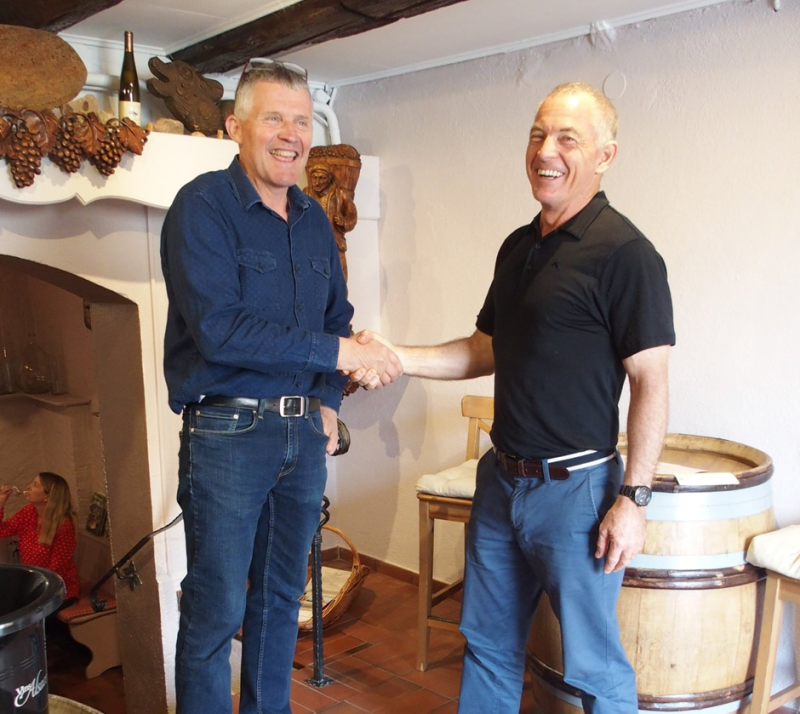
Our host Jacque Sipp at Sipp Mack
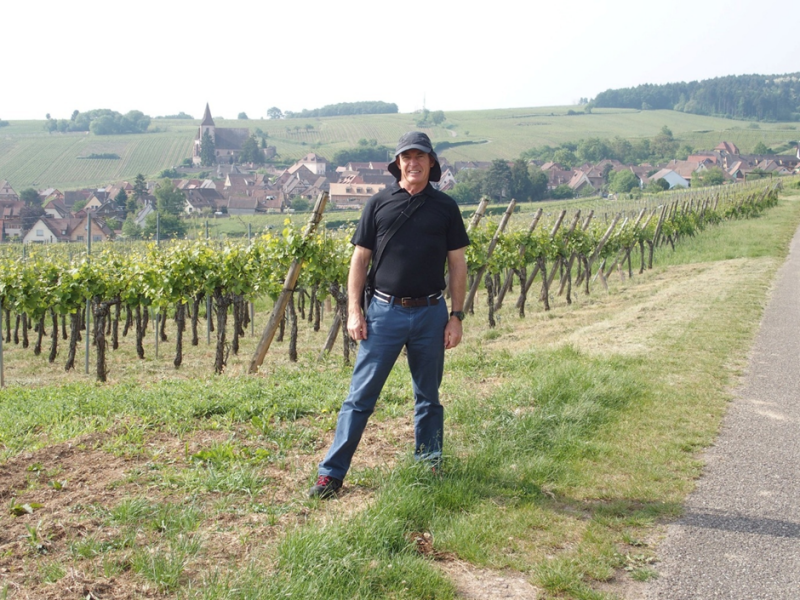
Overlooking the beautiful village of Hunawihr
After an excellent tasting with Jacques, we ventured on to Riquewihr about which I will have more to say shortly. On our return to Ribeauville we walked around the town which is simply stunning and found ourselves at the cellar door of Louis Sipp where we were treated to an incredible vertical tasting of the Kirchberg Grand Cru Riesling: 15, 14, 13, 12, 11, and then the Osterberg 14, 13, 12, 11, 04, 01. Shamefully I didn’t record the name of our excellent host but here he is! The Osterberg 01 was to die for!

The following day we paid a visit to another outstanding producer, Domaine Kientztler. A family estate now in the 5th generation dominated by Riesling and Gewurztraminer with most vines over 35 years old and some over 80 years old. The cellar door experience was a little more formal and I understand not readily available anymore but we were fortunate to meet both brothers Thierry and Eric for the tasting and the benchmark Geisberg Grand Cru Riesling 2015 was simply stunning with a rich mouth filling minerality but all soft, no hard edges, I could only imagine how good it would be in a decade or two!
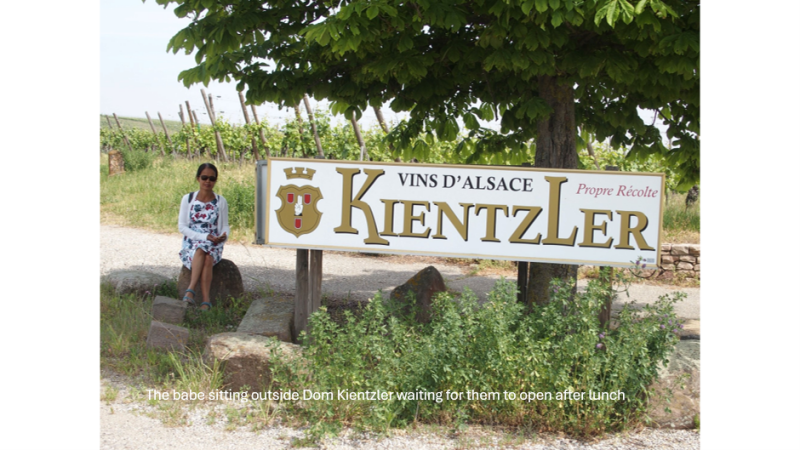
I have diverged from the day we cycled from our stay to Riquewihr, stopping on the way at Hunawihr. When we arrived at the stunning village of Riquewihr, first stop was Vins Fins Hugel, one of the most well-known Alsace Estates and still relaxed and friendly. Again we had no appointment, simply walking in and introducing ourselves, but our reception was marvellous and the tasting generous across a range of wines from entry level to flagship aged Grand Crus.

I had encountered the wines of cooperative Dopff & Irion from Wineseeker in Wellington with some pleasure so it was great to walk in to their main street cellar door for an excellent tasting also.
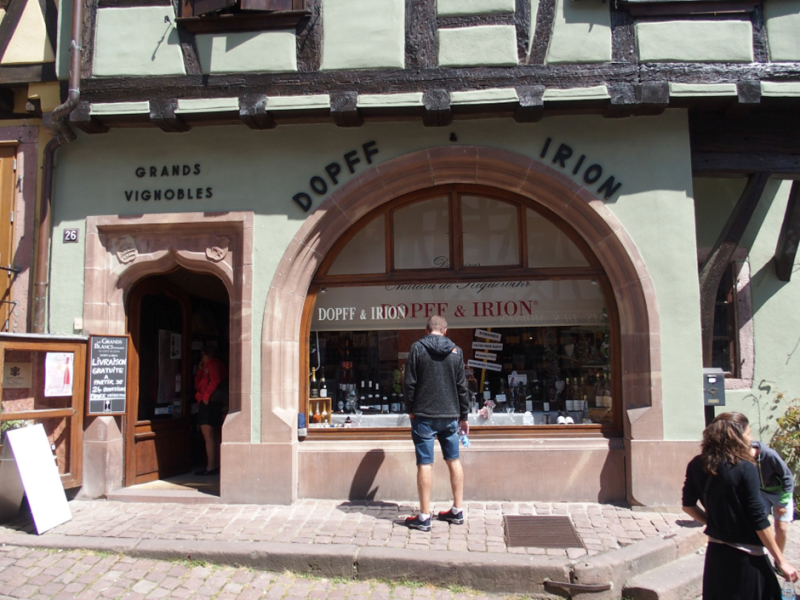
After a lunch of the ubiquitous tarte flambe and a glass of Pinot Gris at one of the many restaurants we ventured forth to our last Riquewihr winery Domaine Agape where we were blessed to meet owner and winemaker Vincent Sipp. Vincent was an incredibly warm and generous host and we tasted some excellent aromatic whites. The surprise however was two Pinot Noirs, the first a lighter more typical by repute Alsatian style but the second a serious wine hinting at a future direction.
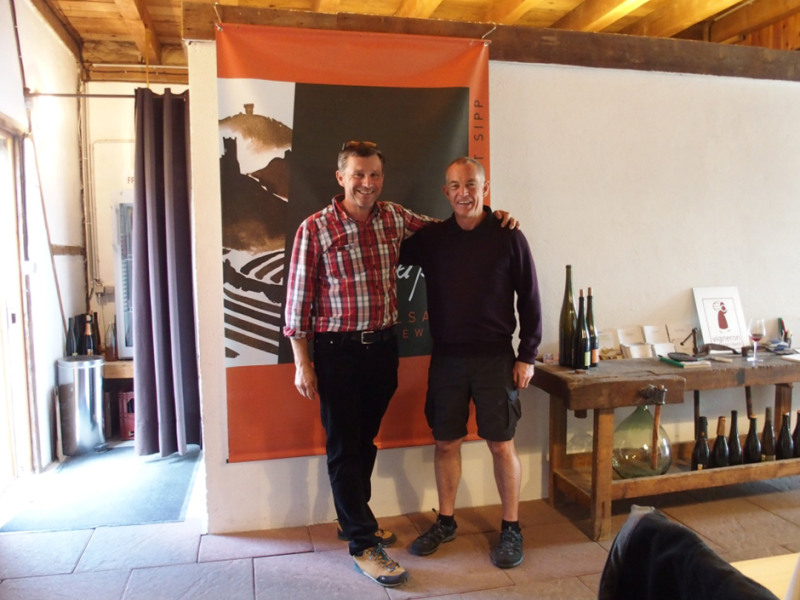
That night we retired to our room with a local multigrain baguette and some local cheese including a Munster and a local Edam style which we washed down with a wine we had purchased from Domaine Durrmann a couple of days previously: the 2011 Moenchberg Pinot Gris. Lemon gold in the glass with aromas of ripe pear, quince and dried apricot, the palate was rich and slightly oxidative with bruised apple, orange peel and walnut lifted with notes of ginger, white pepper and honeysuckle, gently off-dry soft mellow and long. Take me back!
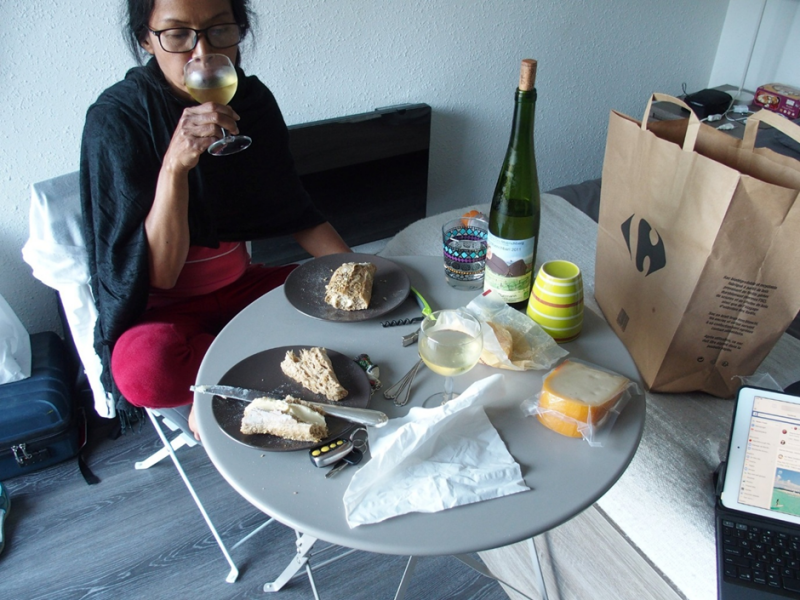
Our second visit to Alsace was en route to Germany and we travelled with my good friend Gus from Sydney and Sicily. We spent just one night in Ribeauville, arriving late one afternoon and spending most of the next day in Riquewihr. We stopped at Dopff & Irion to a negative and haughty reception informing us we could only taste two wines! We didn’t bother, instead heading to Domaine Agape where we renewed our acquaintance with Vincent and another generous tasting of excellent wines. This visit was in July 2019 and a heatwave. We had planned to walk to Domaine Bott Geyl in the adjacent village of Beblenheim (about 6-7km) but Vincent kindly drove us after our tasting there.
Our tasting at the biodynamic producer Bott Geyl was generous, encompassing 15 wines. The standouts for me were the Schlossberg Riesling, and the Furstentum and Sonnenglanz Gewurztraminers.
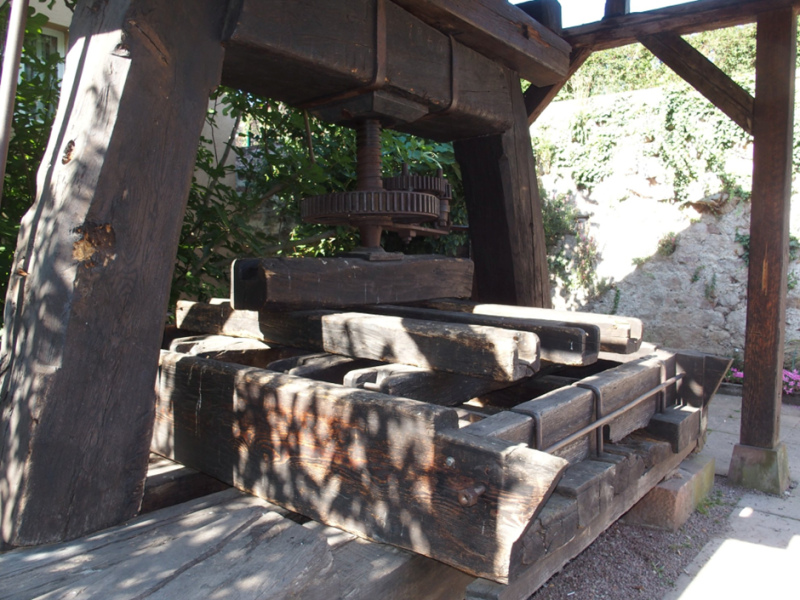
Old wine press in Riquewihr
At the end of the day we caught the bus from Riquewihr to our accommodation in Colmar near the station, for an uncomfortably hot night – we could not open the windows due to the nose and like most French apartments there was no AC. Leaving Gus to catch up on rest, Noy and I embarked on our next ambitious wine-tasting adventure, first getting a bus to Eguisheim, then walking from there to Wettolsheim, Wentzenheim and Turckheim in 38 degree C heat, then returning by train back to Colmar. First stop was Domaine Zinck where we were provided with a tour and tasting by the delightful Sophie from Japan who spoke fluent French and English.
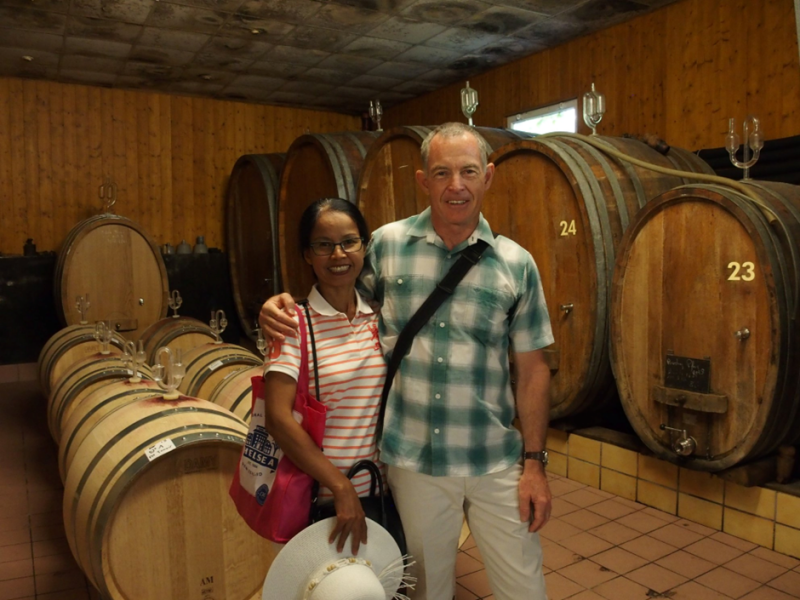
Inside the Domaine Zinck barrel room
Next up, quite nearby in Eguisheim was Leon Beyer. Zinck and Beyer were for me the highlights of the completely dry wines , including to my surprise the quite dry but still rich Pinot Gris and Gewurztraminer.
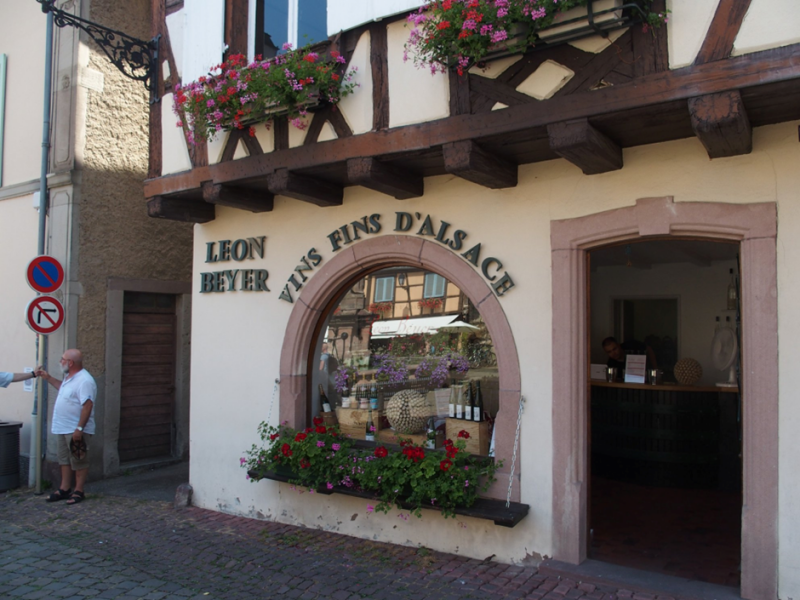
An uncomfortably hot walk took us to Wettolsheim where we had lunch before a futher 2km to Domaine Josmeyer in Wintzenheim. Another biodynamic producer with 28 hectares under vine including parcels in the Hengst and Brand Grand Crus. The bottles have artist labels. We were hosted by winemaker Isabelle Meyer with passion and interesting detail. I particularly enjoyed the powerful Hengst Grand Cru Riesling, structured, flinty with pear apple and citrus flavours. The dry Brand Gewurztraminer was also enjoyable.

The Josmeyer Bottle display in the Cellar Door
Last stop was Domaine Hurst in Turckheim before our train back to Colmar. The Estate had just gained Demeter certification that year and was taken over by Marc Rinaldi in 2016 from the founding Hurst family. Again, this was a generous tasting of nine wines including the signature Brand Grand Crus including Riesling, Pinot Gris and Gewurztraminer.
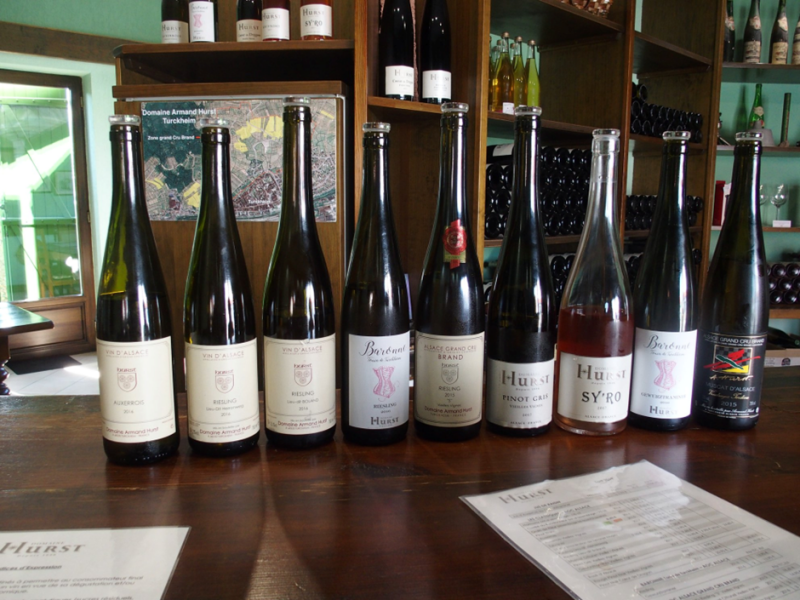
We had planned to return in 2020 but Covid intervened. We finally made it in 2023. This time we stayed in a delightful apartment right in Riquewihr, arriving first to Colmar by train and then to Riquewihr late afternoon on the bus. We enjoyed an excellent reacquaintance with Hugel hosted by this delightful young lady.
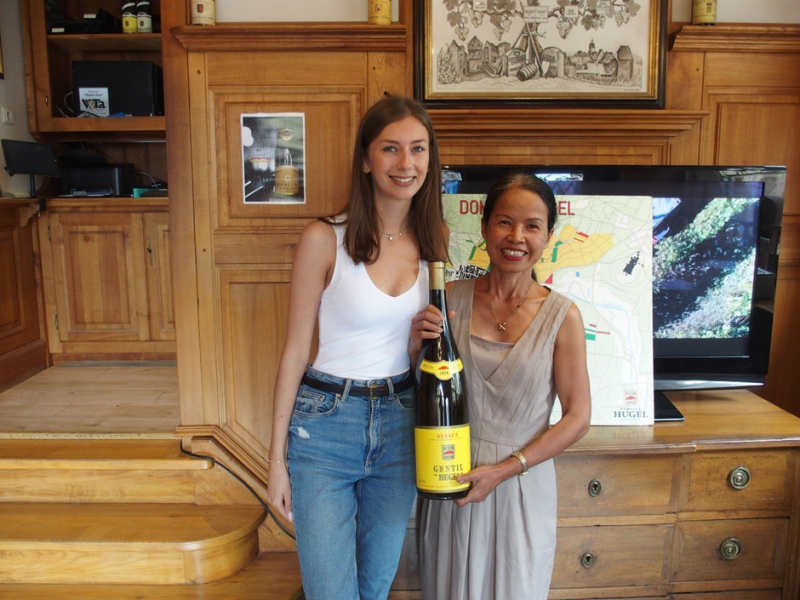
Riquewihr has an excellent cheese shop and this was our next stop to stock up for our customary wine, bread and cheese supper.
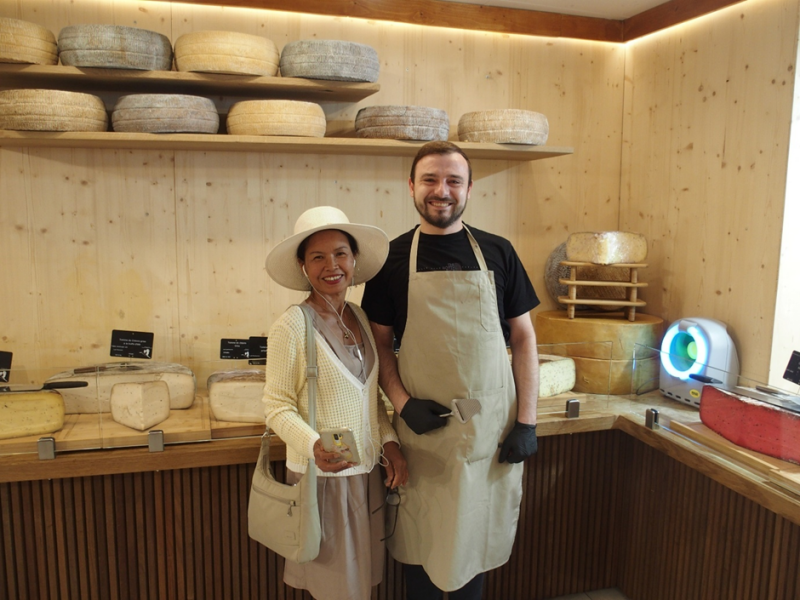
We spent much of the rest of that day just exploring the beautiful township and surrounds including walking among the vineyards towards Ribeauville where we had hoped to get some milk, only to find the Carrefour Express closed. Here is our evening supper.
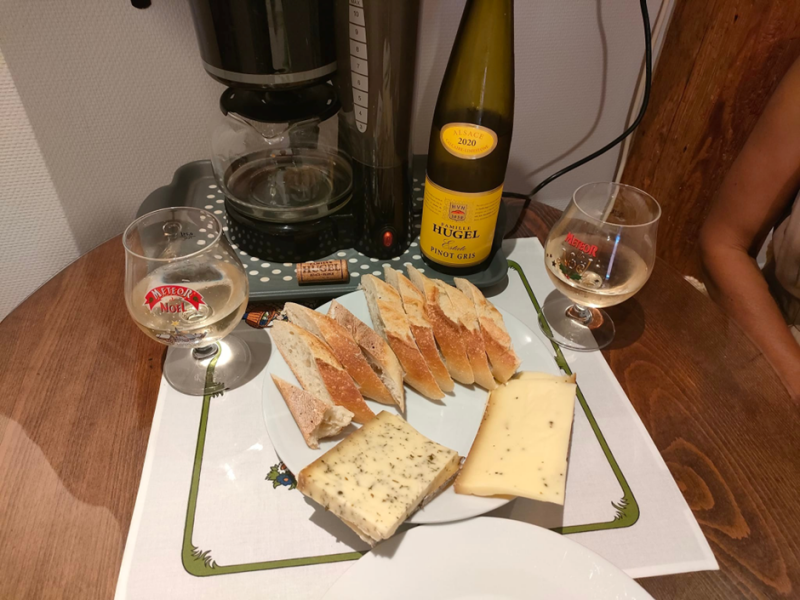
Washed down with Hugel Pinot Gris the two cheeses had a creamy texture like Havarti, one was flavoured with nettles, the other with top shelf truffle. Delicious. Next morning we headed off to Domaine Agape. Vincent was right in the middle of harvest but still made time to provide a generous tasting and I could not help but note the greater intensity and concentration of his Pinot Noir. I really think this variety has a great future in Alsace, but too many growers still overcrop it and it lacks ripeness and concentration.
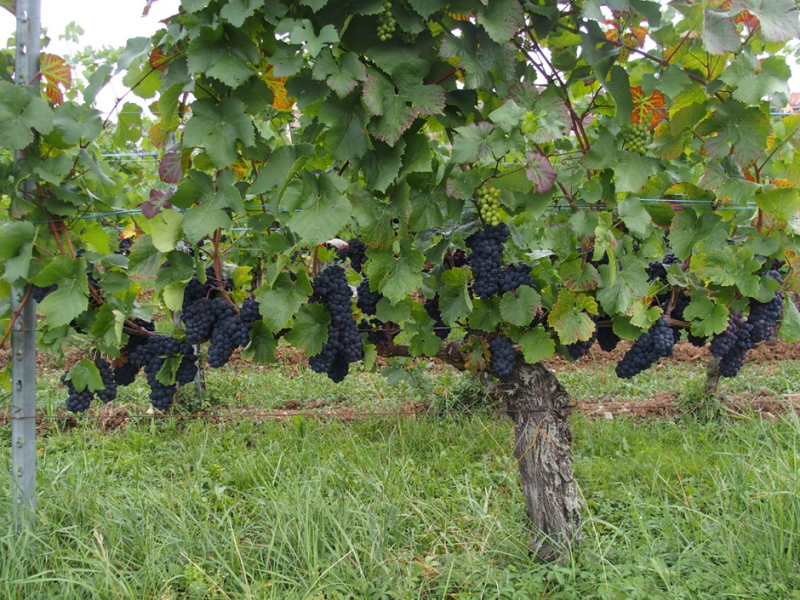
A photo of Pinot Noir grapes outside Riquewihr – the crop should have been thinned
From Agape we headed off to a sensational tasting at Domaine Trimbach in Ribeauville. This time I had made an appointment, explaining my background in wine and I was not disappointed with our reception. Mattis lead us through a huge selection of excellent wines all the way to the famous Clos St Hune Riesling. My personal favourites were the Frederic Emile 2017 and 2015 Riesling but I was also impressed by the 2017 Reserve Pinot Noir. The photo below with Mattis shows only half the wines we tasted!
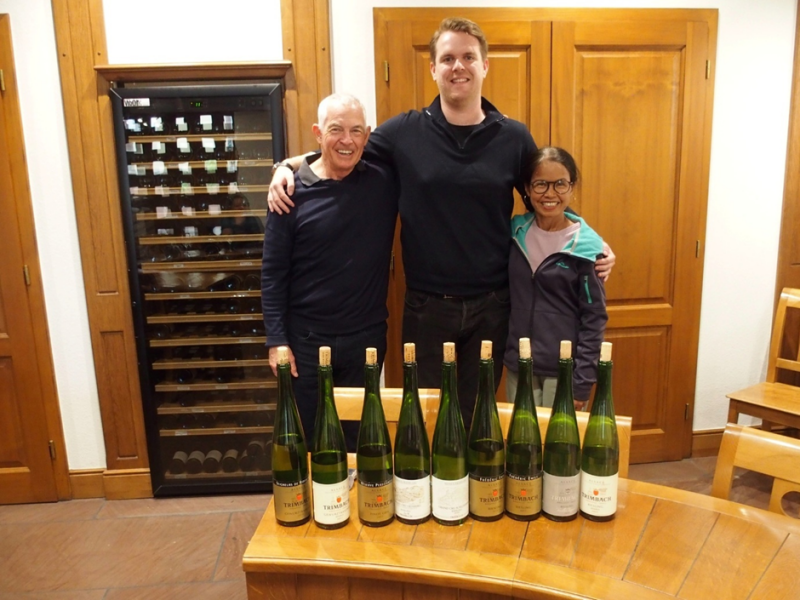
Vincent Sipp had kindly invited us to join him and his charming wife Clarice together with a Dutch wine-buying guest for aperitif that evening, so we walked all 6km back to Riquewihr to join them for a superb evening with too many wines tasted to mention!
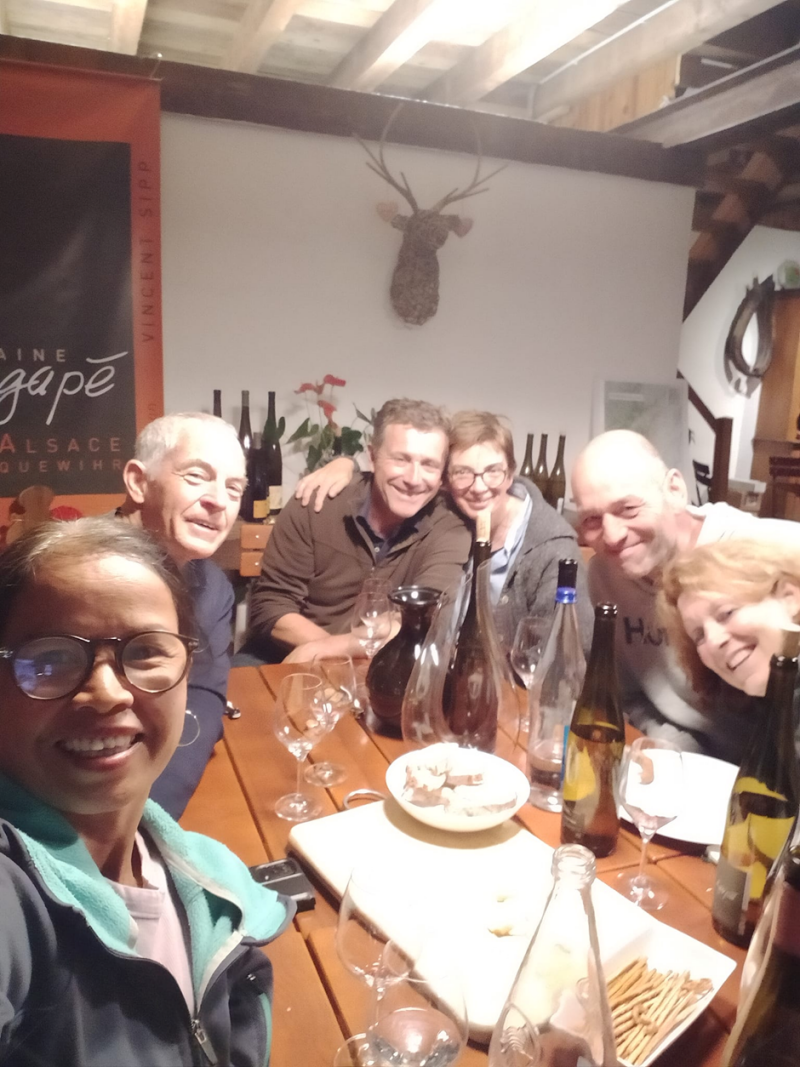
The following morning Clarisse kindly drove us to Eguisheim for a tasting at the small estate of Paul Ginglinger. We had no appointment, and they were quite busy with harvest, but we enjoyed a tasting of three Rieslings followed by the 2022 Pinot Noir I was especially keen to try. Light ruby in the glass with bright aromas of strawberry, red cherry, cranberry and subtle florals of violet and potpourri tinged with clove and cedar spice. Light to medium bodied on the palate with a fruit dominant entry of red berries followed by subtle sous bois and mushroom, with fresh acidity, silky tannins and a long mineral edged finish. If this together with the Agape and Trimbach reds are an indication, the future for Pinot Noir in Alsace is indeed full of promise.
Before heading back to Colmar for our train to Zurich we stopped for an excellent lunch at Le Cavaeu des Douceurs, easily our best meal ever in Alsace and reasonably priced. Mine was sliced medium rare beef on a bed of salad leaves with semi dried tomatoes, shaved parmesan, and balsamic with roast potatoes. Noy’s was a very meaty pork rib with baby potatoes.
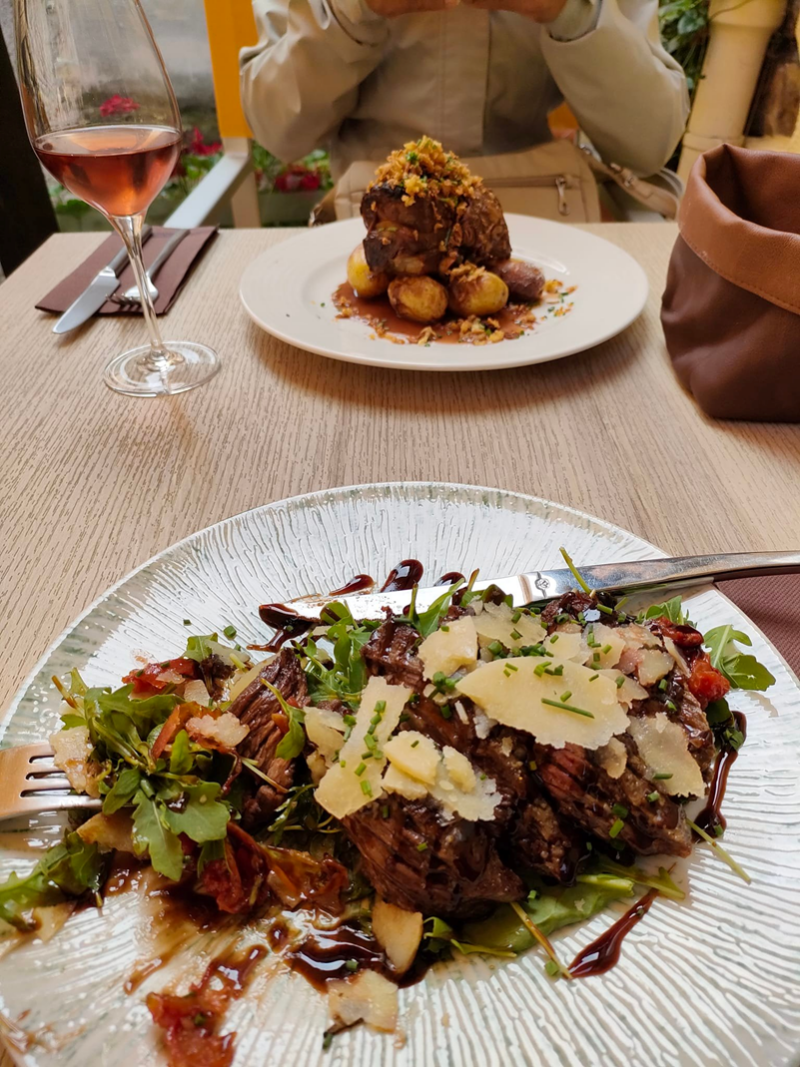
The world of wine is extensive, with an incredible range of experiences on offer, many which still await us. But Alsace occupies a powerful place in our hearts. If you are new to wine travel, or just new to wine travel in Europe, or even just France, Alsace offers a rich and easily accessible experience of food and wine combined with beautiful landscapes, stunning architecture, nice weather and friendly, welcoming cellar doors. When you’ve been once, you will want to go back!
Some more random photos around the beautiful Alsatian villages below.
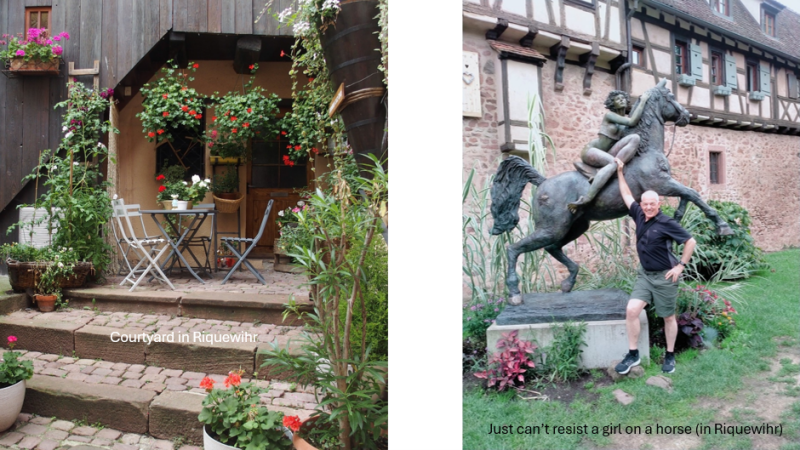
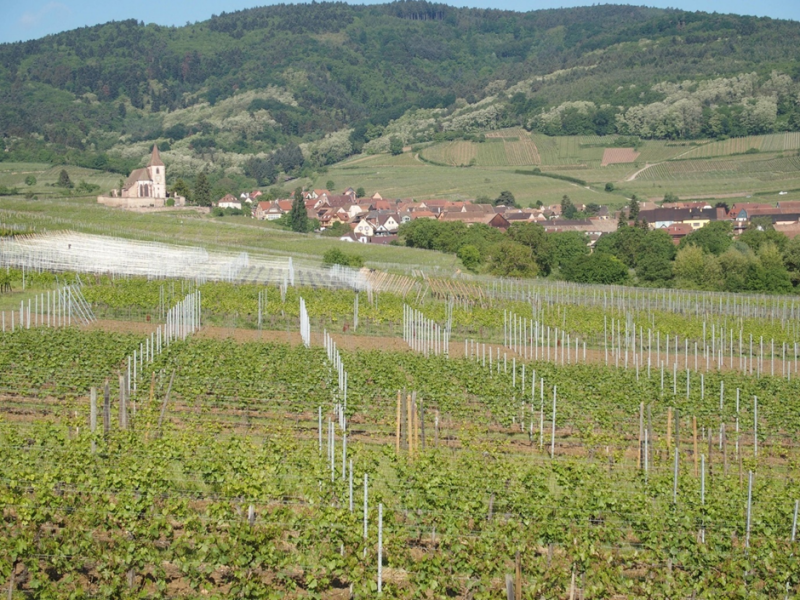
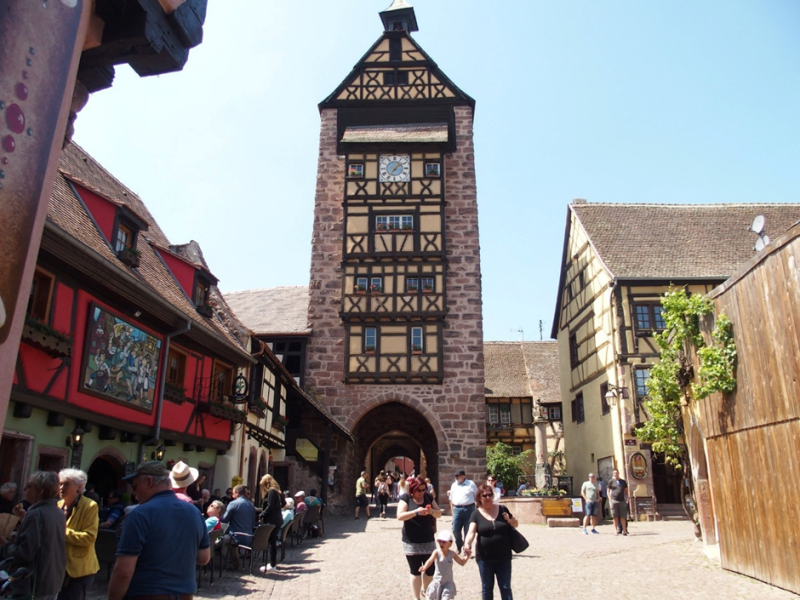
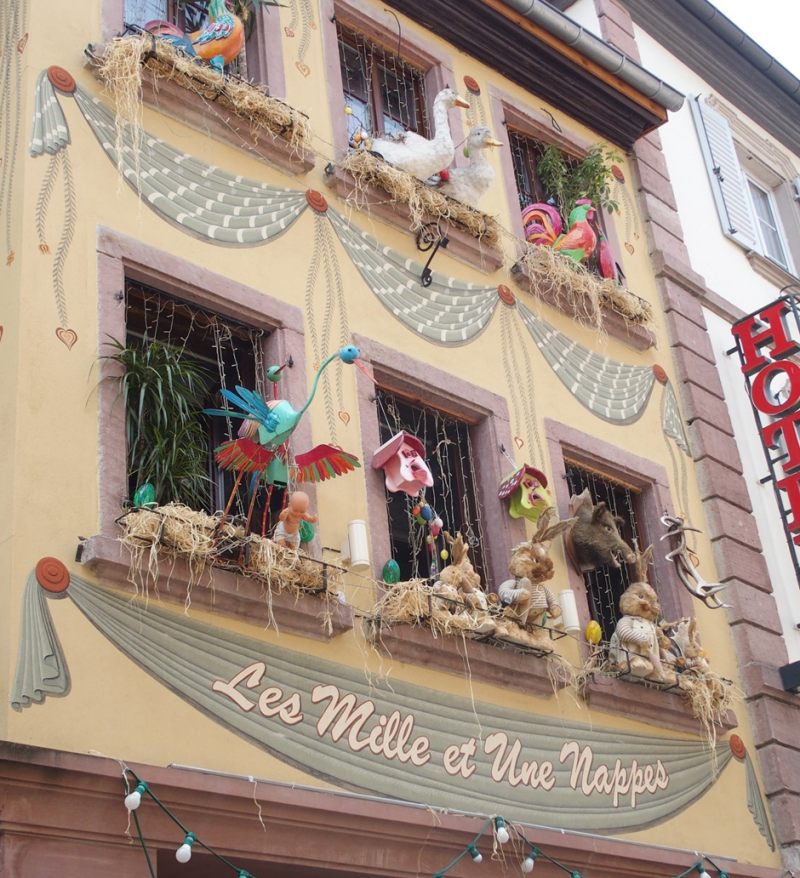
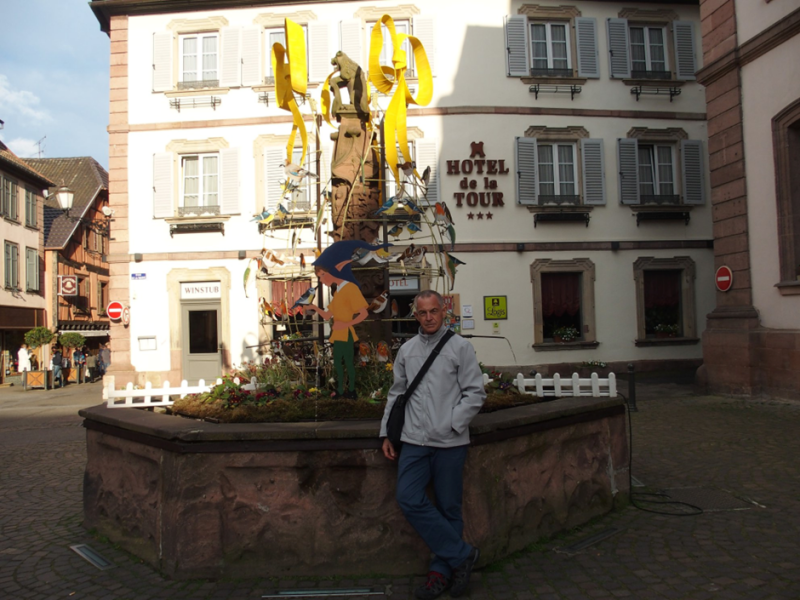
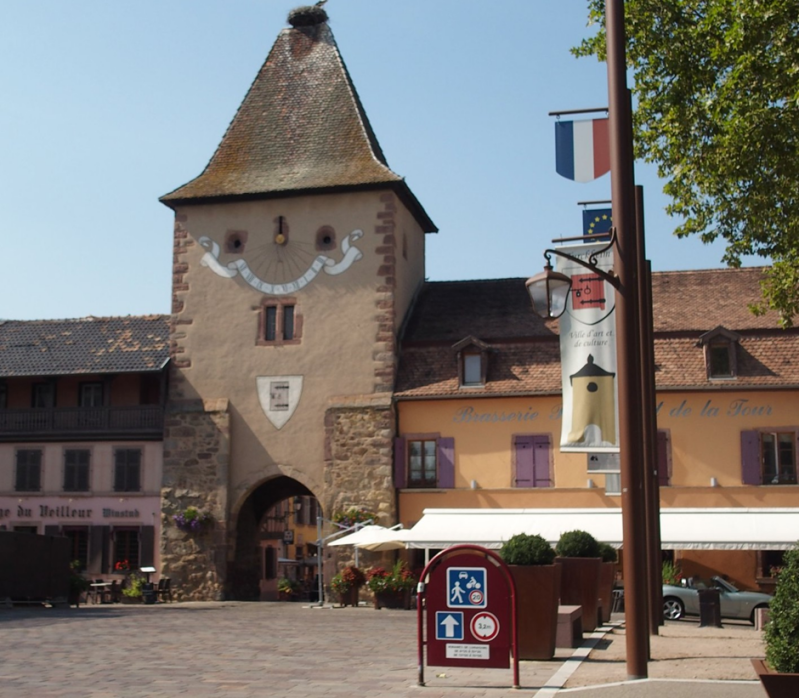
If you enjoyed reading this blog, you can subscribe to receive for free in your email by using the contact form or just email me, info@wineinsights.org. If you’d like to know more about Wineinsights and what I offer, check out my website
Add comment
Comments